出埃及记
Day 1
第1日
Scriptural Reflection
Exodus 25:10-22(The Ark of Covenant)
We shall continue the study of Exodus, the second book of the Old Testament. Read slowly and reflectively the assigned passage twice at least and consider the questions that follow each day.
As we shall be reflecting on the building of the tabernacle and its contents, the following sketch of the layout of the tabernacle may be helpful:
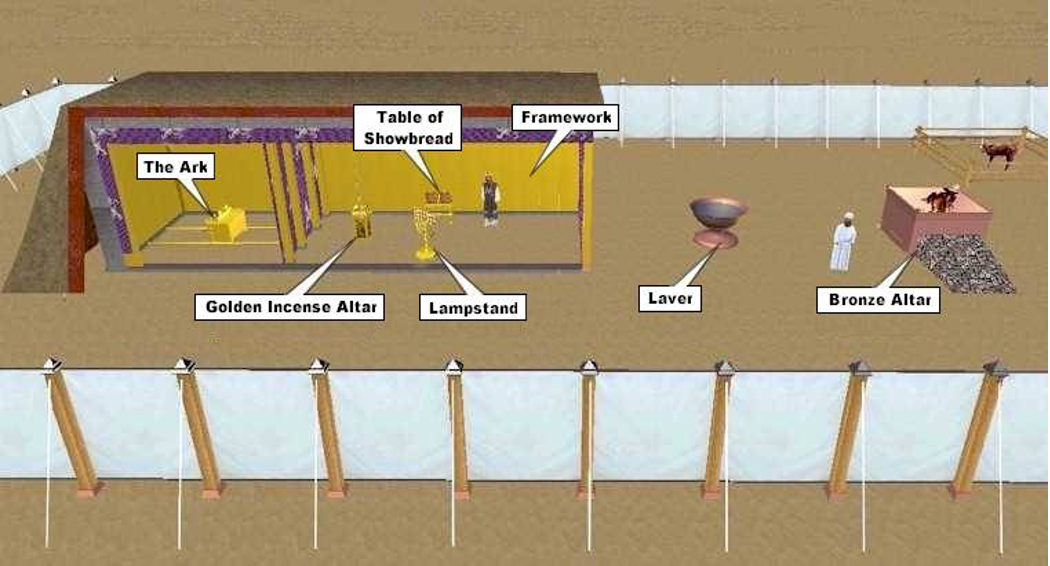
The Ark of Covenant
It is perhaps helpful to note that these instructions concerning the building of the tabernacle are addressed to Moses directly, and thus in v. 22 when God says, “I will meet with you”, it is in singular, addressed to Moses.
(1) I have selected this rare image of the ark which shows the poles being attached to the lower part of the ark (the feet) which correspond more closely to the instruction in v. 12. However, if you are viewing this image in color, it is not gold. Why does the appearance of the ark have to be in gold?
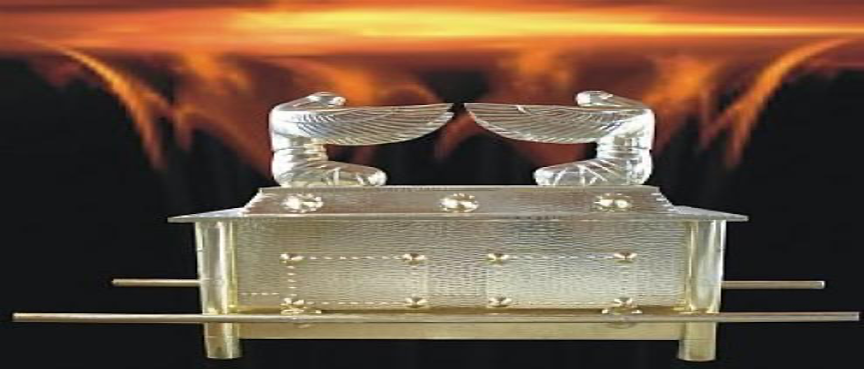
(2) Why should there be cherubim on top of the cover? Why should they be positioned in such a posture? How much does it reflect the reality of the heavenly worship?
(3) Why is the cover called Atonement Cover? (See Leviticus 16:15-16)
(4) Why should the two tablets of the Ten Commandments be put inside the ark?
(5) Contrast the function served by the cherubim at the end of Genesis 3 to their present function, what might be the message that is being conveyed by the ark?
(6) The Israelites have been summoned to Mount Sinai to meet with God and receive the covenant law, they would consider Mount Sinai as the Mountain of God. But with this portable ark, what is God’s message to them and to Moses (see v. 22)?
(7) When we gather our thoughts on all that are being described about the ark, what kind of a throne is being depicted by this ark? What does God expect His people to think of this ark? (See Hebrews 4:16)
(8) What have you learned today and how may you apply it in your life?
經文默想
請慢慢細讀每天指定的經文至少兩遍,然後反複思考問題。
在這周思想會幕和其中的器皿的構造時,以下的會幕圖表有助我們了解神的詳盡吩咐。
 出埃及記 25:10-22(約櫃)
出埃及記 25:10-22(約櫃) 請注意:出埃及記這幾章所載有關神的吩咐,是直接對摩西個人說的,故此25:22說:「我要在那裡與你(即摩西) 相會。」
(1) 在網上之免費約櫃圖案中,我特別揀選以上的一幅,雖然並非金黃色,但杠環卻如25:12所指示的是在「四腳上」安置的。這約櫃之所以完全用金包裹的重要性何在?

(2) 為何在施恩座(即約櫃的上蓋) 放二基路伯?這二基路伯的姿態有什麼意義?如何反映天上的敬拜?
(3) 為何稱約櫃的上蓋為施恩座(英譯贖罪蓋) ?(參利16:15-16)
(4) 放法板(相信是十誡的兩個法板) 在約櫃中有什麼意義?
(5) 創世記第三章以安設基路伯,結束人類在樂園與神的同在為終。現在基路伯重現在約櫃之上有什麼重要的信息?
(6) 因耶和華召以色列人到西乃山與祂見面、立約和接受律法,他們自然以西乃山為神的山。現在祂應許在這流動的約櫃中與摩西相會,這叫他們對神有什麼加深的領會?
(7) 按這十多節的形容,你對約櫃的圖案有什麼感受?你以為神希望百姓對這約櫃會持什麼態度?(參來4:16)
(8) 今天對你主要的提醒是什麼? 你可以怎樣應用在你的生命中?
Meditative Reflection
The Approachable God
“There, above the cover between the two cherubim that are over the ark of the covenant law, I will meet with you and give you all my commands for the Israelites.” (Exod. 25:22)
As God reveals His desire to dwell among His people and instructs Moses to build the tabernacle, the first thing He mentions is the Ark of the Covenant. The fact that everything is wrapped or made in gold, plus the presence of the two cherubim, certainly reflect the holy character of God and the fact that even angelic beings are subservient to Him and worship Him. This awesomeness is thus to be approached with utter reverence.
However, the naming of the cover as the “atonement cover” and the deposit of the Testimony (i.e. the two tablets of the Ten Commandments) signify not only a special covenantal relationship between God and His people, but the fact that even sinful men can now come into the presence of this awesome, holy God.
Of course, we now know that the “atonement cover” is pointing to the atoning sacrifice by the Son of God, Jesus Christ, whose blood “covers” all our sins and that all God’s commandments are satisfied too by His death on the cross. As a result, we who have believed in Him can come boldly before the throne of God, which is not a throne of judgment, but a throne of grace that “we may receive mercy and find grace to help us in our time of need.” (Heb. 4:16).
Of course , Moses was the one who received this revelation from God concerning the tabernacle and the ark directly, and he indeed met with God in the tabernacle before the ark and received commands for the Israelites, but I suspect he had no idea that one day, we all can approach the throne of God like him—or, should I say, in a far more intimate way, as now God dwells within the heart of each of His children. If Moses knew that what he was instructed to build symbolized such an eventuality and that atonement is made possible not by the blood of animals, but the very blood of God Himself one day, he would carry out his project with even greater excitement.
As much as we admire Moses and his special relationship with God, he had to wait till God descended upon the tabernacle to meet with Him, often at God’s timing, but ours is in every way far more blessed that his. We can come to His throne of grace anytime we desire. How much should we treasure our communion with God today!
靈修默想小篇
可親近的神
「我要在那裡與你相會,又要從法櫃施恩座上二基路伯中間,和你說我所要吩咐你傳給以色列人的一切事。」 (出25:22)
神既向摩西顯露心跡,要與祂的百姓同住(同搭帳棚) ,祂首先吩咐摩西造的,是約櫃。這約櫃要全包金子,更有基路伯在其上,是要表明神的聖潔,和連天使也要敬拜祂的威嚴。這位可畏的神,敬拜祂的是要帶著何等的虔誠!
神同時稱約櫃以上的板為「施恩座」(或譯贖罪蓋) ,也吩咐把法版(即十誡的二法版) 放在裡面,不但肯定了百姓與神立約的關係,更表明罪人竟能進到聖潔、可畏的神面前。
當然,我們現在知道這「施恩座」(或贖罪蓋)是指到神兒子所獻上的贖罪祭,藉所流的寶血遮蓋了我們的罪,更藉著祂在十架上的死,同時滿足了神律法一切的要求。因此,凡相信祂的,就能坦然無懼的來到神的寶座前—這寶座不是審判的座位,乃是「施恩寶座」,在那裡我們「得憐恤,蒙恩惠,作隨時的幫助」 (來4:16) 。
摩西當然是那位直接從神那裡得建會幕和約櫃的啟示的,而神確是在會幕的約櫃上把吩咐傳給他。但是我相信,連摩西當時也不曉得,有一天,人人都可以像他一樣親近神—其實是比他更親近,因為今天神竟然是住在每一個信祂的人心中!如果摩西曉得,他吩咐建造的會幕和約櫃,竟然是豫表不是藉牛羊的血的救贖,乃是藉神所流出的血所帶來的完全救贖,他一定更興奮的去完成這建會幕的使命。
雖然我們會羨慕摩西如此與神親密的關係,但他總要等待神作主動,按神指定的時刻,才能親近神。我們是比摩西更有福的,因為我們是可以隨時到施恩寶座前的。我們該怎樣寶貴我們每天與神的相交呢!
Day 2
第2日
Scriptural Reflection
Exodus 25:23 – 30 (Table of the Presence)
Read slowly and reflectively the assigned passage twice at least and consider the questions that follow each day.
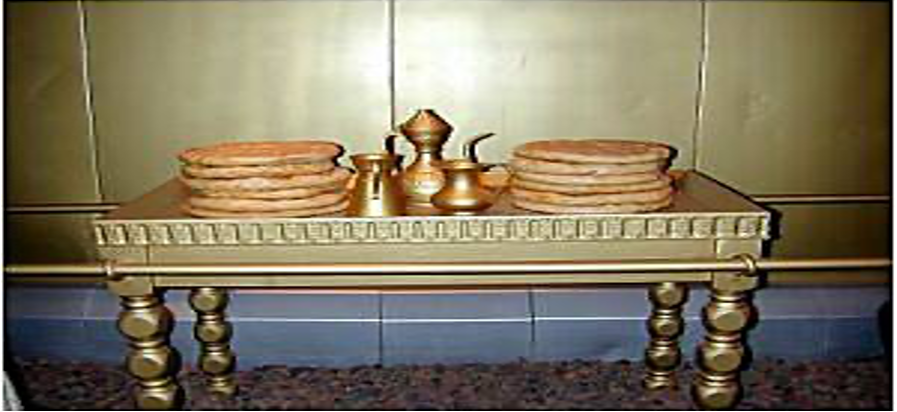
While the “origin and the exact significance of this Presence-Bread are not clear” (Durham, 362), let’s reflect based on what is being written and it is helpful to consult Leviticus 24:5-9 where the function of the bread and the incense is explained (also see note below):
(1) The word for “Presence” is literally “face” (Alter, 463). So what does the “Bread of (God’s) face” mean to the people?
(2) Presumably, this special bread was placed on the table every Sabbath along with the incense which is burned to the Lord (to represent the bread according to Lev. 24:7). Although the bread from the previous week would be eaten by the priests (and the priests only—see 1 Sam. 21:4-6 & Matt. 12:4), how does the use of the Bread of Presence signify “as a lasting covenant” by the Lord?
(3) What does eating normally represent in the Oriental culture?
So as God accepts the bread (symbolized by the burning of the incense) and the priests eat of the same bread a week later, what does this signify and what is the “lasting covenant” being affirmed by this weekly ritual?
(4) If the 12 loaves of bread symbolize the eternal fellowship of God with His people, such a covenant is still perpetuated within the most holy setting:
a. As the ritual takes place “in a holy place” as “a most holy part of their regular share of the offerings made to the Lord” (Lev. 24:9), and
b. The entire table is made not only of gold, but designed in such a way that any direct human contact or handling is avoided.
How should this balance between the maintenance of holiness and fellowship speak to our communion with God today?
(5) What have you learned today and how may you apply it in your life?
Note: the table has four kinds of containers on it:
1. A plate on which the Bread of Presence was placed
2. A small pan for incense
3. A pitcher for the wine of libation, and
4. A bowl into which the libation was poured.
經文默想
出埃及記25:23-30 (陳設餅桌)
請慢慢細讀每天指定的經文至少兩遍,然後反複思考問題。

雖然「陳設餅的來源和確實的重要性不大清楚」(Durham, 362) ,讓我們按這裡所記載的來思想,並參考利未記24:5-9有關陳設餅和淨乳香的記載。
(1) 「陳設」直譯為「面」(Alter, 163) 。既是如此,「神面的餅」對百姓有什麼意義?
(2) 陳設餅在每安息日都擺設在耶和華面前,藉著乳香的火祭獻給神(利 24:7);該星期所陳設的餅,祭司在下周吃用。這個循環表明了永遠的約的那方面?(利 24:9永遠的定例,原文是約)
(3) 一同吃或進食在一般東方人的風俗有什麼意義?陳設餅為神所用(藉乳香的火祭來象徵) ,也為祭司所吃,是要表明什麼永約?
(4) 十二個餅是代表以色列十二個支派。這每周的陳設和吃用固然表明他們與神的契合。
a. 利未記強調這樣的獻上是「火祭中的至聖」(24:9)
b. 陳設桌的構造,不但是為金所包裹的,更是避免人手的接觸。
這裡所表明的契合,是至聖的。今天我們與神的交往,是否也應如此?為什麼?
(5) 今天對你主要的提醒是什麼?你可以怎樣應用在你的生命中?
註:陳設桌上有四樣擺設:1. 載餅的盤子、2. 載乳香的器皿、3. 奠酒的爵、4. 奠酒的瓶。
Meditative Reflection
Taking God’s Grace for Granted
“Over lay it (the table) with pure gold…and make its plates and dishes of pure gold, as well as its pitches and bowls for the pouring of offerings.” (Exod. 25:23, 29)
The use of gold for the Ark and the Table of Presence is an unmistakable symbol for the holiness of the Lord. The base material being acacia wood is a matter of practicality, for if the whole ark or table is made of pure gold it will be too heavy to carry. Both the design of the ark and the design of the table is such that when they are moved there would not be any direct contact of human hands.
While the ark itself is placed inside the Holy of Holies only entered into by the High Priest once a year with the blood of sacrifice, the table is visible to the attending priests. As a result, this table and its bread stand as a visible covenant of God’s presence with His people. And as the bread is being accepted by the Lord (symbolized by the burning of the incense beside the bread), the same bread is being eaten by the priests the week after. This weekly ritual (as long as it is faithfully maintained) stands as a lasting covenant not only of God’s presence, but of His fellowship with His people. As we know, this mutual “eating” of the bread is a symbol of friendship.
All of the above has been fulfilled by our Lord Jesus, as He is the true Bread of Life (Jn. 6:51) in whom we are fed for eternal life, and with whom we have daily fellowship. But the Table of Presence continues to remind us of our need for holiness. If the Bread of Presence is considered the most holy of offerings (Lev. 24:9), how much more should we approach the Bread of Life in holiness. No wonder as the Corinthian believers ate the Lord’s Supper “without recognizing the body of the Lord”, many were “weak and sick and asleep” (1 Co. 11:29, 30). Therefore, as we emphasize that we are under grace, we should not overlook that our Lord remains the Holy One who cannot be taken lightly.
靈修默想小篇
不要輕看神的恩典
「要用皂莢木做一張桌子……要包上精金……要做桌子上的盤子、調羹,並奠酒的爵和瓶;這都要用精金製作。 」 (出25:23, 24, 29)
當然,精金是喻表神的聖潔與威嚴。但是約櫃和陳設桌的內質是木,卻是出於實際的原因。若是都用精金,就會重得難於搬運了。不過,兩者的設計都是免得人在搬運時,隨意的碰倒聖物。
約櫃是放在至聖所,除大祭司一年一次在贖罪日,帶血才能進去,是神隱藏的同在。陳設桌和陳設餅卻是神的面(陳設這字的原意)和與百姓所立的永約(看得到)的彰顯。這桌上的餅是藉乳香的火祭被神悅納,也在下一周為祭司所吃用。所表明的,不單是陳設—神的同在,更是神、人的相交。我們都知道「吃」是友情的表示。
以上的一切,都已在耶穌基督—生命的糧—裡得到完全的應驗(約6:51) :我們藉著「吃祂的肉」(6:54) 得永生,更與祂天天相會。但是這陳設桌卻繼續提醒我們務要聖潔,因為「在獻給耶和華的火祭中是至聖的」(利24:9) 。基督之為生命的糧,同樣是因為祂所經的火祭!故此,今天我們親近我們生命的糧時,是要何等的聖潔!保羅在哥林多前書所提出的警告絕非空言,因為當地的信徒守主餐時,不分辨是主的身體,「因此在你們中間有好些輭弱的、與患病的、死的也不少」(11:30) 。故此,雖然我們是在恩典之下,我們決不可忽略主同時是聖潔無比、可畏的神。
Day 3
第3日
Scriptural Reflection
Exodus 25:31-40 (Golden Lampstand)
Read slowly and reflectively the assigned passage twice at least and consider the questions that follow each day.
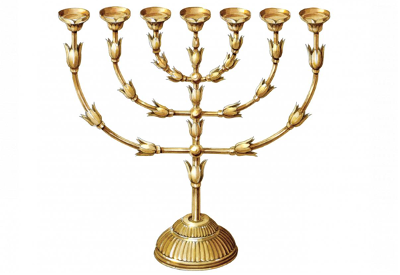
(1) As you read about the design of the lampstand:
a. What catches your attention or imagination?
b. What questions does it evoke in you?
(2) On a practical level, the Holy Place needs light for the attending priests to serve before the Lord on behalf of the people and the lampstand serves this purpose. But its spiritual implication is also unmistakable. Apart from the symbol for gold, what other symbols can you think of represented by this golden lampstand?
(3) While within the Pentateuch, there is no immediate spiritual significance attached to it, God does reveal to Zechariah its spiritual significance (or at least one of its spiritual significances) in Zechariah 4:1-14. What is it?
(4) The Lord Jesus also uses golden lampstands as an analogy in Revelation 1:20. What do those lampstands stand for? How may we, as a result, understand the spiritual function of this golden lampstand within the tabernacle?
(5) Commentators, in general, consider the use of almond-shape because of “the fact that it is the earliest of all the trees in both its blossom and its fruits” (Jer. 1:11, 12). If this is the case, what then is the significance of shaping the lampstand after the shape of an almond tree?
(6) What is the significance of the reiteration in v. 40?
(7) What have you learned today and how may you apply it in your life?
經文默想
出埃及記25:31-40(金燈臺)
請慢慢細讀每天指定的經文至少兩遍,然後反複思考問題。

(1) 在你細讀金燈臺的設計時:
a. 有什麼觸動你思想的地方?
b. 你心中產生了什麼疑問沒有?
(2) 在實際的層面,祭司在聖所中代表百姓在神面前事奉是需要燈臺的光照。但這燈臺的屬靈意義是明顯的,除了它是精金所造之外,你還可以想到其他屬靈的意義嗎?
(3) 雖然在摩西五經中,沒有道出金燈臺的屬靈意義,聖經卻在撒迦利亞書4:1-14引出它其中的意義。請翻到那裡閱讀,看看臺燈有什麼重要屬靈的喻表。
(4) 主耶穌在啟示錄亦以金燈臺作喻表(1:20) 。在啟示錄,金燈臺代表什麼?
(5) 從以上兩處經文,我們可以領會到金燈臺在會幕中已包含什麼屬靈的意義?
(6) 既是這樣,25:40的提醒有什麼重要意義?
(7) 今天對你主要的提醒是什麼?你可以怎樣應用在你的生命中?
Meditative Reflection
The Golden Lampstand
“Consider how far you have fallen! Repent and do the things you did at first. If you do not repent, I will come to you and remove your lampstand from its place.” (Rev. 2:5)
Allow me to share with you Keil & Delitzsch’s thoughts on the significance of the golden lampstand then and now as follows:
“The signification of the seven-armed candlestick is apparent from its purpose, viz., to carry seven lamps, which were trimmed and filled with oil every morning, and lighted every evening, and were to burn throughout the night (ch. 27:20, 21; 30:7, 8; Lev. 24:3, 4). As the Israelites were to prepare spiritual food in the shew-bread in the presence of Jehovah, and to offer continually the fruit of their labour in the field of the kingdom of God, as a spiritual offering to the Lord; so also were they to present themselves continually to Jehovah in the burning lamps, as the vehicles and media of light, as a nation letting its light shine in the darkness of this world (cf. Matt. 5:14, 16; Lk. 12:35; Phil. 2:15). The oil, through which the lamps burned and shone, was, according to its peculiar virtue in imparting strength to the body and restoring vital power, a representation of the Godlike spirit, the source of all the vital power of man; whilst the oil, as offered by the congregation of Israel, and devoted to sacred purposes according to the command of God, is throughout the Scriptures a symbol of the Spirit of God, by which the congregation of God was tilled with higher light and life. By the power of this Spirit, Israel, in covenant with the Lord, was to let its light shine, the light of its knowledge of God and spiritual illumination, before all the nations of the earth. In its seven arms the stamp of the covenant relationship was impressed upon the candlestick; and the almond-blossom with which it was ornamented represented the seasonable offering of the flowers and fruits of the Spirit, the almond-tree deriving its name…from the fact that it is the earliest of all the trees in both its blossom and its fruit (cf. Jer. 1:11, 12). The symbolical character of the candlestick is clearly indicated in the Scriptures. The prophet Zechariah (ch. 4) sees a golden candlestick with seven lamps and two olive-trees, one on either side, from which the oil-vessel is supplied; and the angel who is talking with him informs him that the olive-trees are the two sons of oil, that is to say, the representatives of the kingdom and priesthood, the divinely appointed organs through which the Spirit of God was communicated to the covenant nation. And in Rev. 1:20, the seven churches, which represent the new people of God, i.e., the Christian Church, are shown to the holy seer in the form of seven candlesticks standing before the throne of God.” (Keil & Delitzsch, 435)
靈修默想小篇
金燈臺
「 所以,應當回想你是從那裡墜落的,並要悔改,行起初所行的事。你若不悔改,我就臨到你那裡,把你的燈臺從原處挪去。」(啟2:5)
容許我與你分享著名舊約解經家Kei & Delitzsch 對金燈臺昔與今的思想:
「那有七管的燈臺的重要性顯然是與它的功用有關—就是承托著七個燈盞,每早被修理、添油,每晚被點亮,燃燒達旦(出27:20,21; 30:7,8; 利24:3,4) 正如他們要準備好陳設餅這屬靈的糧食在耶和華面前,並不斷的把神國土地勞碌所得的果子獻上,作為屬靈的祭。以色列人也要不斷藉著燃點這燈來就近神,要成為發光的器皿和媒介,照亮這黑暗的世界國度。(參太5:14, 16; 路12:35;腓2:15) 。那使燈燃燒和發亮的油,其特質叫身體得強壯,重新得力—是代表似神的靈,是人得力的主要源頭。這油是以色列的會眾向神獻上,按著神的吩咐分別為聖。油在聖經裡一貫是象徵神的靈,是那使神的會眾得更高的光亮和生命的。靠著神的靈,以色列民在與神所立的約中,要他的光—那認識神的光和屬靈的光—照亮及散發在地上萬國之前。藉著燈的七管,與神立約的關係深印在燈臺上。那些作裝飾的杏花代表季節性所獻上的聖靈的果子和花朵;杏樹也藉此得名—因為它是所有樹中最早開花結果的(見耶1:11,12) 。燈臺的徵意也清楚的在聖經中表明。先知撒迦利亞(第四章) 看見七盞燈和兩棵橄欖樹,每邊一棵,供應所需的油:那與他說話的天使告訴他,兩棵橄欖樹就是兩位受膏者,意思是王與祭司的代表—是神指派、神的靈與這約的國民說話的媒介。在啟示錄1:20,那代表神的新子民、基督的教會的七教會,也是以七個燈臺來向聖先見(指使徒約翰) 來喻表的。」
Day 4
第4日
Scriptural Reflection
Exodus 26:1-37 (The Curtains)
Read slowly and reflectively the assigned passage twice at least and consider the questions that follow each day.
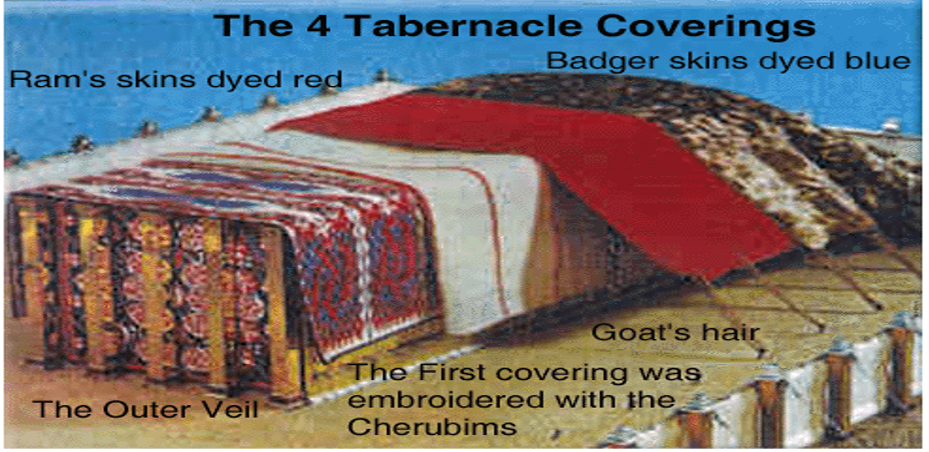
This is a long chapter that could be rather mundane, but I would suggest that you still read it slowly with the following divisions and highlights as a guide. Perhaps, pay attention to the kind of materials and color and try to understand their meaning:
Vv. 1-6: the tabernacle is made up of 10 curtains of expensive fabric and yarn of two sets of five curtains each, joined by loops to stretch about 60 feet in length and 42 feet in height. Note that cherubim are embroidered on them.
Vv. 7-14: to protect the expensive curtains, an additional set of curtains and two covers are to be made. The curtains are made of goat skins with hair intact, stretching about 66 feet in length and 45 feet in height, enough to cover the tabernacle proper, including its front and back. In addition to these two layers, another cover of rams’ hide, plus another cover of sea-cow’s hides are to be made, making the tabernacle a tent of four layers.
Vv.15-30: these curtains are to be held by upright supports anchored in pedestals of silver and bound together by a series of cross-members and two special corner supports.
Vv. 31-35: the tabernacle is to be further divided into a smaller Holy of Holies (of 15’ x 15’ x 15’) where the ark will be located, separated by a veil with fine fabric with the cherubim embroidered on it, and the Holy Place (of 30’ x 15’ x 15’)
Vv. 36-37: The open east end of the tabernacle is to be closed by a screen made of the same materials as the inner curtains and the veil.
(1) Did you notice a gradual change in the type of materials in the design of the tabernacle “from more to less precious materials the greater the distance from the Holy of Holies and the Holy Place”? Why is it the case?
(2) Apart from the two cherubim on top of the Ark cover, more are to be embroidered on the most inner layer of the curtains. What does this portray?
(3) It is believed that the design of the support system emphasizes on its portability, meaning the tabernacle depicts a Presence on the move. Some commentators think that it points to the temporariness of God’s presence, while some think that it is a sign of His constant presence wherever His people move. Which do you think is the case? Why?
(4) Read vv. 31-34 again about the erection of the veil separating the Holy of Holies from the Holy Place. Then read Mark 15:38. Imagine you were the priest who was on duty in the Holy Place witnessing the splitting of the veil. What impact might it have on you and others who rushed in to see what had happened?
(5) What have you learned today and how may you apply it in your life?
經文默想
出埃及記26:1-37(幔子)
請慢慢細讀每天指定的經文至少兩遍,然後反複思考問題。

這章的篇幅稍長,一口氣的讀完可能較沉悶。可按以下的分段、逐段細讀,試從物料和顏色的使用中,略微領會其中的意義:
第1-6節: 會幕主要由十幅貴重的物料所織成,每面五幅,用鈕扣相連,共長約60呎、高約42呎。繡上基路伯。
第7-14節: 為要保護這層貴重的幔子,要蓋上一層山羊毛織的幔子、長約66呎、高約45呎,足夠蓋過原有的幔子。再加蓋一層公羊皮,和另一層海狗皮作罩棚的蓋。即共四層。
第15-30節: 這些幔子和上蓋是要靠竪板支撐,每板有兩銀座作底,並作閂把竪板連上,和兩個支撐的拐角。
第31-35節: 要用作會幕底層同樣的材料繡上基路伯作幔子,把會幕分成聖所(30’ x 15’ x 15’) 和至聖所(15’ x 15’ x 15’) ,後者作約櫃安放之處。
第36-37節: 又用同樣的材料(沒有繡上基路伯) 作東面(正門) 的門簾。
(1) 在你細讀會幕不同的物料時,有否留意到材料的質地貴賤的原則?分別的原因是什麼?
(2) 除了約櫃有二基路伯,在那些地方也繡上基路伯呢?這是要表明什麼?
(3) 一些解經家指出,這會幕的種種設計乃在乎叫會幕能較容易拆、建。有認為是暗示耶和華同在的過渡性;有認為是清楚的叫百姓知道,無論到何處,總有祂的同在。你會較認同那個說法?為什麼?
(4) 請再細讀26:31-34這段有關用幔子分隔至聖所和聖所的經文。然後,翻到馬可福音15:38。如果在耶穌死亡時你是當席留守聖所的祭司,目睹分隔的幔子裂為兩半時,立時的感受會包括什麼?
(5) 今天對你主要的提醒是什麼?你可以怎樣應用在你的生命中?
Meditative Reflection
“Make the tabernacle with ten curtains of finely twisted linen and blue, purple and scarlet yarn with cherubim worked in them by a skilled craftsman.” (Exod. 26:1)
As we read the various instructions about the construction of the tabernacle, we might wonder why the God who is so strongly against the making of idols would use images for His sanctuary. I wish to share with you the thoughts of the 7th century Eastern Church father, John of Damascus on this matter. We may not agree with him on everything concerning the use of images and icons for today, but his points on the tabernacle are well taken:
“And the Lord spoke to Moses, saying, “Behold I have called by name Beseleel …And I have filled him with the spirit of God, with wisdom and understanding, and knowledge in all manner of work. To devise whatsoever may be artificially made of gold, and silver, and brass, of marble and precious stones, and variety of wood.” (Exod. 31:1-5) [18] And again: “Moses said to all the assembly of the children of Israel…Let everyone that is willing and hath a ready heart, offer them to the Lord, gold, and silver, and brass, violet, and purple, and scarlet twice dyed, and fine linen, goat's hair, and ram's skins died red and violet, colored skins, selim-wood, and oil to maintain lights and to make ointment, and most sweet incense, onyx stones, and precious stones for the adorning of the ephod and the rational…” (Exod. 35:4-10)
See you here the glorification of matter which you make inglorious. What is more insignificant than goat’s hair or colors? Are not scarlet and purple and hyacinth colors? Now, consider the handiwork of man becoming the likeness of the cherubim. How, then, can you make the law a pretence for giving up what it orders? If you invoke it against images, you should keep the Sabbath, and practice circumcision. It is certain that “if you observe the law, Christ will not profit you. You who are justified in the law, you [19] are fallen from grace.” (Gal. 5:2-4) Israel of old did not see God, but “we see the Lord’s glory face to face.” (2 Co. 3:18)
We proclaim Him also by our senses on all sides, and we sanctify the noblest sense, which is that of sight. The image is a memorial, just what words are to a listening ear. What a book is to the literate, that an image is to the illiterate. The image speaks to the sight as words to the ear; it brings us understanding. Hence God ordered the ark to be made of imperishable wood, and to be gilded outside and in, and the tablets to be put in it, and the staff and the golden urn containing the manna, for a remembrance of the past and a type of the future. Who can say these were not images and far-sounding heralds? And they did not hang on the walls of the tabernacle; but in sight of all the people who looked towards them, they were brought forward for the worship and adoration of God, who made use of them. It is evident that they were not worshipped for themselves, but that the people were led through them to remember past signs, and to worship the God of wonders. They were images to serve as recollections, not divine, but leading to divine things by divine power.”
(John of Damascus, On Divine Image, 18-19)
靈修默想小篇
會幕的圖像
「你要用十幅幔子做帳幕。這些幔子要用撚的細麻和藍色、紫色、朱紅色線製造,並用巧匠的手工繡上基路伯。」(出26: 1)
讀到建造會幕詳盡的吩咐時,不曉得你是否在想:神既禁止以色列人造偶像,為何卻在會幕中加設天使等的圖案呢?我想與你分享七世紀教會的教父John of Damascus對這事的意見。我雖然不大同意他對所謂「聖像」在今天敬拜之用的見解,但他對會幕中之圖案的見解是值得我們參考的:
「“耶和華曉諭摩西說:看哪,猶大支派的……比撒列,我已經提他的名召他。我也以我的靈充滿了他,使他有智慧,有聰明,有知識,能做各樣的工,能想出巧工,用金、銀、銅製造各物,又能刻寶石,可以鑲嵌,能雕刻木頭,能做各樣的工。” (出31:1-5) 。同時,“ 摩西對以色列全會眾說……你們中間要拿禮物獻給耶和華,凡樂意獻的可以拿耶和華的禮物來,就是金、銀、銅,藍色、紫色、朱紅色線,細麻,山羊毛,染紅的公羊皮,海狗皮,皂莢木,點燈的油,並做膏油和香的香料,紅瑪瑙與別樣的寶石,可以鑲嵌在以弗得和胸牌上” (出35:4-10) 。
看哪,這裡豈不是把榮耀賜予屬物質的嗎?就是你所鄙視的。有什麼比山羊皮或它的顏色更不重要?朱紅色、紫色和藍色豈不是顏色而已?現在,試想人的手工竟造出基路伯的形像。你怎能用律法作藉口貶低律法的定例?如果你靠(律法) 的權柄來禁止造像,你就該(仍) 守安息日和行割禮。當然,“你若守律法,基督與你們無益了。你們這要靠律法稱義的,是與基督隔絕,從恩典中墜落了”(加5:2-4) 。舊日的以色列人看不見神,但“我們眾人既然敞著臉,得以看見主的榮光” 的(林後3:18) 。
我 們是藉著五官來傳揚祂的,我們把最高貴的視覺分別為聖。圖像是作為紀念的,就像話與聽話的耳朵的關係一樣。像書對識字的人的作用,圖像對給文盲也是這樣。 像說話是給耳聽,圖像是向眼睛說話,叫人能明白。因此,神吩咐約櫃要用皂莢木造,但卻在外包上精金,法版也要被放其內,也放杖和嗎哪的金器皿在內,是要記 念前事,也是後事的預表。誰能說這些不是圖像,先驅的角聲呢?它們不是掛在會幕的牆上,乃是叫欲看的人可以目睹,它們為神所用,在敬拜,仰望神的時候拿出 來。明顯的,它們不是被敬拜的對象,而是叫百姓藉著它能被引導回想過去,並敬拜行奇事的神。這些圖像是用以作回憶,本身並非神聖,但被神聖的能力所用,引 至神聖的事(領域) 。」
(John of
Day 5
第5日
Scriptural Reflection
Exodus 27:1-8; 20-21 (Altar and Oil)
Read slowly and reflectively the assigned passage twice at least and consider the questions that follow each day.
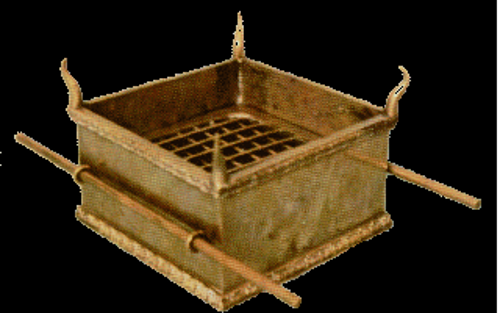
Vv. 1-8: The Altar
This is, perhaps, the most-often used furniture in the tabernacle in that sacrifices would be made daily by the priests on behalf of the people. In actual fact, without the altar, there is no access to the Presence of the Lord at all. And in the process of sacrifice, blood of the sin-offering is to be smeared upon it (Lev. 4:7). This ritual constantly reminds the people of their sins and their need for atonement through the blood of animal.
(1) As pagan worship often take the form of sacrifice of animals on their altars as well, how should the Israelites distinguish themselves and their worship from the pagans?
(2) Look up Exodus 21:14 and I Kings 1:50-53. Do you get a sense of how the Israelites looked upon the altar?
(3) Upon their return from exile after the destruction of the temple by the Babylonians, the first thing the Israelites did was to rebuild their altar (Ezra.3:2-6), why was that?
(4) Ever since AD. 70, there is basically no prescribed altar to make their sacrifice, what should be the message to the Jews today?
(5) Apart from the need to come before God with the blood of sacrifice, what other meanings does the offering of sacrifice entail?
(6) Now as Christians, we do not need to perform the rites of sacrifice because Jesus, the Lamb of God has made the ultimate, once-for-all sacrifice for our sins. How then should we live out the ultimate meaning of worship through sacrifice to God? (See Rom. 12:1-2)
Vv. 20-21: Oil for the Lampstand
The instruction to use clear oil (not pressed) is to ensure the least amount of smoke generated from the light, and keeping it burning from evening till morning appears to be the task of the priest on the evening shift. Psalm 134:1 has this to say to the night-shift priest: “Praise the Lord, all you servants of the Lord who minister by night in the house of the Lord.”
(7) Why does the psalmist make special mention of them, who presumably have far less to do except to keep the lampstand glowing, and are far less visible to the public?
(8) What might be the lesson for you today?
經文默想
出埃及記27:1-8; 20-21 (祭壇與燈油)
請慢慢細讀每天指定的經文至少兩遍,然後反複思考問題。

第1-8節:祭壇
這該是會幕中最常用的器皿。除節日外,每天祭司必在其上為民獻祭。沒有這祭壇,百姓也沒可能親近神的。在獻上祭牲時,祭牲的血要被抹或倒在壇的某些地方(如利未記4:7) 。此舉是要提醒百姓知罪和要藉血贖罪的必須。
(1) 我們都知道其他民族拜偶像、假神時,往往都是獻上動物作祭牲。這樣,以色列人怎樣才可以表明他們對耶和華的敬拜和獻祭是與他們有異的呢?
(2) 請參閱出埃及記21:14和列王紀上1:50-53。從這兩段經文,你可以領會以色列人是怎樣看這壇的?他們這樣待祭壇對嗎?
(3) 聖殿被巴比倫人拆毀後,當以色列人被擄歸回時,首先重建的是什麼?(見拉3:2-6) 為什麼?
(4) 主後七十年,羅馬軍拆毀聖殿後,以色列人再沒有祭壇獻贖罪祭了。對猶太人而言,這該是什麼信息?
(5) 除了藉動物的血贖罪,這祭壇該對百姓有什麼其他的意義?
(6) 今日作為基督徒,我因主耶穌—神的羔羊—一次的獻上,不用再獻贖罪祭了。但舊約的祭壇和獻祭對我們尚有什麼的預表?(參羅12:1-2)
第20-21節:燈油
用搗成、非壓成的清橄欖油點燈,是會盡量滅少油煙的。這從晚到早打理這燈的責任自然是落在晚更的祭司身上。詩篇134:1是這樣論到這些晚更的祭司的:「耶和華的僕人夜間站在耶和華殿中的,你們當稱頌耶和華!」
(7) 為何詩人要特別提到這些較清閒,似乎主要是打理燈油的祭司?
(8) 這對我們事奉神的人有什麼提醒?
(9) 今天對你主要的提醒是什麼?你可以怎樣應用在你的生命中?
Meditative Reflection
The Unique Worship of Yahweh
“Build an altar of acacia wood, three cubits high; it is to be square, five cubits long and five cubits wide.” (Exod. 27:1)
The altar has to be the most-used furniture in the tabernacle without which the people cannot gain access to God. Apart from sacrifices offered on special occasions like the Day of Atonement, the priests would make daily offerings through the use of the altar.
I was once approached by a worship leader in the church who wished to burn incense as part of the worship service. In a Chinese church with most of the members having come out of a traditional ancestral worship (if not Buddhist) background, the burning of incense is inseparable from idol worship, I gently declined his request, although he cited good reasons for so doing, including the examples seen in Revelation.
This causes me to reflect on the sacrificial rites given by God to the Israelites. It will not be an exaggeration to say that the pagan neighbors of Israel all practiced some forms of animal sacrifices to their gods. Then, how could God’s people demonstrate through their worship that their God— Yahweh is the Only True God?
The many rigid commands surrounding the manner of offering certainly depict the unique holiness of Yahweh, like the insistence on avoiding the use of yeast, but the design of the altar itself also speaks of the holiness of Yahweh in that
- It is made of acacia wood overlaid in bronze with the express prohibition of using dressed stones (Exod. 20:25), which were common to pagan worship where all kinds of images of creatures were “dressed” on the altars. This is consistent with the Second of the Ten Commandments. The attention of the worshippers are directed away from the instrument—the altar—towards the sacrifices themselves—the shedding of the blood for sin-offerings, or the meaning of the offerings. Ultimately of course, the main focus is the Lord whom we worship.
- If the former command is implicit, the command in Deuteronomy 12 is explicit for the sake that the Israelites will not “worship the Lord…in their way” (12:4) by commanding them to bring their burnt offerings and sacrifices only to the place God has chosen for them; “To that place you must go” (12:5).
All these presumably rigid and strict commands do not only point to the holiness of God, but to the entire intent of worship—unlike pagan worship where the people worship based on what they can get out of it, the worship of Yahweh, apart from being totally God-centered, is one of love and fellowship with God.
靈修默想小篇
敬拜耶和華的不同
「你要用皂莢木做壇。這壇要四方的,長五肘,寬五肘,高三肘。」 (出27:1)
會幕中的祭壇該是最常用的器具了。沒有祭壇,百姓就不能親近神。除了特別指定的節期外 (如贖罪日),祭司每天也要在祭壇上獻祭。
曾有一位在教會中負責領詩歌的青年人,希望我批准他在崇拜時,像舊約的時代,和啟示錄也記載的,用燒香作敬拜。當然,在華人背景的教會中,這是萬不能作的,因為我們都多從傳統的拜祖先或甚至佛教中悔改歸主的,以前偶像的敬拜是與燒香分不開的。
這件事使我思想到神告訴以色列人,藉在祭壇上殺祭牲作敬拜神的吩咐。這敬拜的方式,豈不是與迦南人拜偶像、假神的敬拜無異嗎?神的百姓可以怎樣藉他們的敬拜來表示敬拜的耶和華才是天地惟一的真神呢?
當然,在所規定的眾多獻祭的條例中,已可以看到耶和華的獨一和聖潔:就像嚴謹的除酵吩咐是一個好例子。但在建祭壇的吩咐上,也顯出了耶和華的獨一和聖潔:
- 祭壇是用皂莢木造的,再用銅包裹。神亦早已聲明,「不可用鑿成的石頭/dressed stones」造,意即不可像外邦人那樣,在祭壇的石上繪畫各樣的走獸圖案。這是與第二誡吻合的。敬拜者的注意力要離開任何的工具,包括祭壇本身,而集中在所獻上的祭牲—所流的血所代表的悔罪和贖罪。當然,至終是集中在接受敬拜的神身上。
- 若然,以上的吩咐的意義是隱藏的,那麼申命記12:4的吩咐就非常清楚了:「你們不可以照他們那樣事奉耶和華你們的神」。因此,神吩咐以色列人不能隨意選擇何處去獻祭,乃要按神所指定的「就當往那裡去求問……獻祭。」(12:6-7)
這些嚴謹的條例,不但顯出耶和華的聖潔,更顯示敬拜耶和華和敬拜外邦的鬼神原委的不同:外邦的敬拜是在乎得鬼神的好處,但向耶和華的敬拜是以神為中心、出於愛和交往的敬拜。
Day 6
第6日
Scriptural Reflection
Exodus 27:9 -19 (Courtyard)
Read slowly and reflectively the assigned passage twice at least and consider the questions that follow each day.
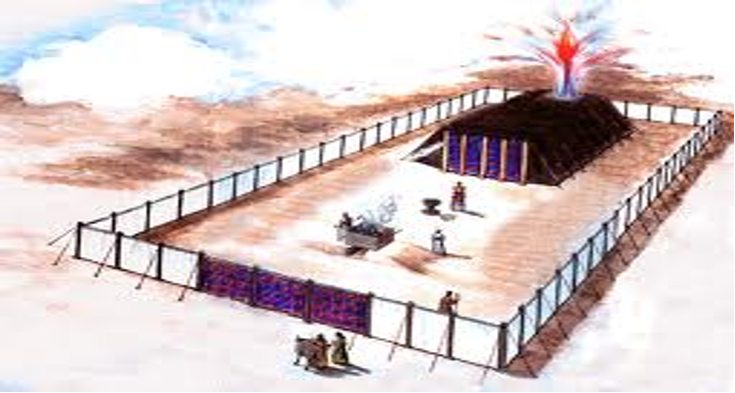
(1) The perimeter of the courtyard serves the function of separating this place of worship from the outside world. One enters into the courtyard for one purpose only and that is to draw near to God and to worship Him. How should this remind us of our attitude in attending our Sunday worship?
At this time, it is, perhaps, fitting for us to recollect and reflect on what we have read so far about the tabernacle:
(2) 25:1-9: God reveals His desire to “tabernacle” with His people beyond Mount Sinai—how different is our God from all the gods of the pagans in this respect?
(3) 25:10-22: God shall reveal His presence and meet with Moses between the cherubim above the cover over the ark of the Testimony—how does it reflect the both God’s holiness and mercy?
(4) 25:23-30: A Table of Presence (face) shall be made with the Bread of Presence perpetually offered and maintained—how does this deepen our understanding of what Jesus, the Bread of Life, says of Himself, “I tell you the truth, unless you eat the flesh of the Son of Man and drink His blood, you have no life in you.” (Jn. 6:53)
(5) 25:31-40: A golden lampstand is to be made of pure gold to light up the Holy Place (27:20-21 mandates the use of clear oil and ensures its perpetual burning)—in what way should we become like Jesus, the light of this world resembling the purity and brightness of the golden lampstand?
(6) 26:1-37 specifies the four-layered curtains and the separation of the Holy of Holies from the Holy Place—such a separation is no longer needed, as the barrier between the Most Holy God and sinners has once-for-all been torn down. Do you think the design of some churches or cathedrals taking after the pattern of the tabernacle, separating into three sections is meaningful or biblical?
(7) 27:1-8 gives instruction for the building of the all-important altar without which there is no access to God—how then shall we live as “living sacrifices” to God? (Rom. 12:1-2)
(8) 27:9-19: The building of the courtyard to separate the place of worship from the outside world —what is the “real” world—within the courtyard or outside the courtyard?
(9) What is the main message for you today and how may you apply it in your life?
經文默想
出埃及記27:9-19 (院子)
請慢慢細讀每天指定的經文至少兩遍,然後反複思考問題。

(1) 院子的建造是要把這個敬拜耶和華的地方與外面的世界隔離。百姓進入這院子的惟一目的是要親近神、敬拜神。既是這樣,這該給我們每主日到教會什麼的提醒?
我們這星期差不多都讀過會幕的器皿和擺設了,就讓我們在此作個重溫:
(2) 25:1-9:神向摩西顯露心意,希望在西乃山後,繼續藉「會幕」與以色列民同在。耶和華神與世上別神在此有什麼分別?
(3) 25:10-22:神立約櫃為與摩西在二基路伯中間相會之處。這設立如何顯出神的聖潔與憐憫?
(4) 25:23-30:陳設桌上擺設的陳設(神的面) 餅的每周火祭和祭司的吃用—如何叫我們明白主耶穌所說:「我實實在在的告訴你們,你們若不吃人子的肉,不喝人子的血,就沒有生命在你們裡面」(約6:53) ?
(5) 25:31-40:用精金造的燈臺燃點照亮聖所。27:20-21更定規單使用清橄欖油,使油常常點著作永例—我們應該如何像基督發出清潔、明亮的光,作金燈臺?
(6) 26:1-37:要織成四層的幔子,和分隔至聖所的幔子。但這分隔的幔子已裂開—人與神之間的罪的阻隔已因基督所獻的贖罪祭拆除。既是這樣,今天一些教堂倣效會幕的設計,把教堂分成三段,是否在開倒車?為什麼?
(7) 27:1-8:會幕中最常用的工具—祭壇建造的吩咐。沒有祭壇,百姓就不能親近神。今天,羅馬書12:1-2吩咐我們要怎樣獻上呢?
(8) 27:9-19:院子的建造為要把敬拜的地方與世界隔絕—你以為院內,還是院外才是「真實的世界」?
(9) 今天對你主要的提醒是什麼?你可以怎樣應用在你的生命中?
Meditative Reflection
A Real Courtyard
“Make a courtyard for the tabernacle...” (Exodus 27:9)
The need to construct a courtyard outside of the tabernacle proper is clearly to separate it and its activities from the world outside and rightfully so. In these days of life in the fast lane, for many Christians, Sunday worship within the sanctuary of God is the only time and place they can gain a moment of quietness and sanity (that is, if they could actually gain stillness within at all).
However, some church services are conducted like a variety show, with the constant loud noises of musical instruments and vocalists, they only serve to numb one’s inner feelings than the provision of true quietness for reflection. Worse, some so-called seeker’s services are so action-oriented that one simply does not get a sense of “holiness” that must be associated with the worship of the Almighty God. This, perhaps, explains why more and more Evangelical Christians are returning to churches with high liturgy.
The church must provide a “courtyard” to shield the worshippers from outside activities and distractions. It takes intentional planning of the worship that avoids too much chatting and socializing before the service, with carefully chosen hymns or songs which promote adoration, a biblical message that is Christ-centered and ample time for prayers and meditations. And may I be bold to suggest that, for Evangelical churches, expand the time of your closing prayer which should be the climax of the whole worship, as the worshippers gather their thoughts for the entire service and respond quietly, fully, to what the Spirit has spoken to them. Otherwise, once they step out of the “courtyard”, however wonderful a worship experience they might have had, whatever God has laid in their heart will dissipate over the brunch table.
靈修默想小篇
真正的院子
「你要做帳幕的院子。」(出27:9)
造院子的吩咐是在乎要把這用作敬拜的會幕與外面的世界隔離。今天是個極忙碌的世代,連基督徒能找到片刻的安靜,恐怕只在主日敬拜的時刻才找到。可惜的是,有些基督徒就是到了教會,心中也不能平靜下來。
這可能是教會的錯。有些教會的崇拜好像是做「show」似的,音樂和歌聲的過份響亮和重複,只能叫人心被麻木片刻,談不上有安靜的反思。更有所謂為尋道的人所設的崇拜,活動交替以至失去「神聖」的意識。無怪,按較新的報導,越來越多基督徒,走向較偏重儀式的教會崇拜,希望尋到片刻的寧靜。
教會實在需要從會幕的設計學習,為敬拜者提供真正的「院子」,是與外界隔離的。這是需要有刻意的安排的:包括在崇拜前減少交談、崇拜的詩歌以敬拜為主、有以基督為中心的信息,和要畫出充份的時間給敬拜的人作禱告、反思。
其實,我們往往忽略了崇拜結束前那段安靜默禱的時刻—這正是敬拜的高潮—因敬拜者從與神相會中所得的感動和信息,需要好好的作安靜的回應。若然那段結束默禱的時刻是草草了事的,聖靈的感動,很容易被午膳的一杯茶所沖掉了。
Day 7
第7日
Scriptural Reflection
Exodus 28:1-9 (The Priesthood)
Read slowly and reflectively the assigned passage twice at least and consider the questions that follow each day.
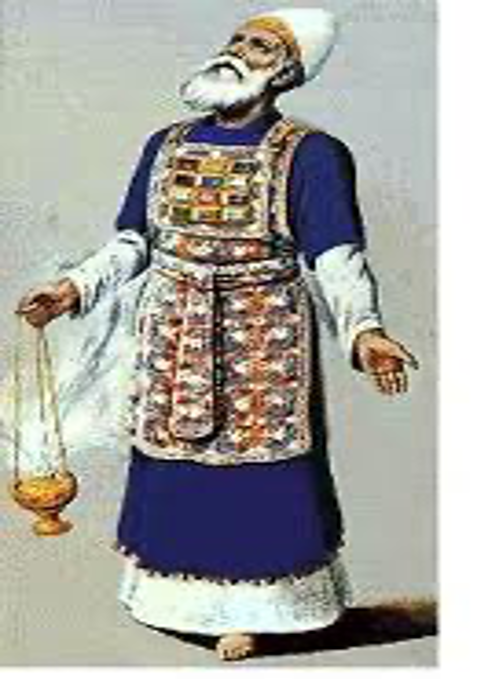
(1) What is the purpose of having to make special garments for the priest?
(2) What do the garments have to do with the priest’s consecration?
(3) What is the role of a priest?
(4) In the case of Aaron and his sons, their role is that of a high priest, with that comes the sacred garments that include an ephod (perhaps like a vest), a breastpiece, a robe, a tunic, a turban and a sash. It is specified here that they “have use gold, and blue, purple and scarlet yarn, and fine linen.” What do the garments have in common with the materials of the tabernacle? What might the reason be?
(5) On the shoulder of the priest, two onyx stones are to be engraved with the names of the sons of Israel:
a. What is the purpose of having these names to be born on their shoulders?
b. What is meant by “as a memorial before the Lord”?
c. Why should the names be engraved on precious stones?
(6) What is the main message for you today and how may you apply it in your life?
經文默想
出埃及記28:1-14 (祭司)
請慢慢細讀每天指定的經文至少兩遍,然後反複思考問題。

(1) 為何要為祭司作特別的衣服?
(2) 這些衣服如何叫祭司「分別為聖」?
(3) 祭司的工作和身份是什麼?
(4) 亞倫和他的兒子(即大祭司) 要身穿以弗得、戴胸牌、穿外袍、內袍、冠冕和腰帶。這裡指明用的物料和那些會幕的設置相同?原因何在?
(5) 大祭司肩上擔著刻上十二支派名字的寶石
a. 用意何在?
b. 在耶和華面前作記念是什麼意思?
c. 為何名字要刻在寶石上?
(6) 今天對你主要的提醒是什麼?你可以怎樣應用在你的生命中?
Meditative Reflection
Jesus the High Priest
“Therefore he is able to save completely those who come to God through him, because he always lives to intercede for them.” (Heb. 7:25)
To me, the most striking features of the garments of the high priest are the two onyx stones on his shoulder straps and the twelve stones of his breastpiece that bear the names of the twelve tribes of Israel.
This reminds the High Priest of his awesome responsibility before the Lord on behalf of the people
- To stand before the Lord with the names on his shoulders, as a “memorial”—that is to remind God of His covenant with all His people, and
- To bear in his breast, which is his heart, all the time, the twelve tribes of Israel
This awesome responsibility is now assumed also by shepherds of the church. We are to put our people on our shoulders—the spiritual well-being, especially their eternal destiny, falls on our shoulders. It is a heavy responsibility. But we are not only to shoulder this responsibility, but to bear the people in our heart—to remember them all the time, especially in prayers. This, too, can be a heavy burden.
But if we think this is entirely our responsibility, then we are in error, because the true High Priest is our Lord Jesus Christ who “always lives to intercede for them.”
I have often come across church leaders and pastors with heavy hearts (and thus long faces) who seem to bear the burden of their people all by themselves. And when I have the privilege of praying with them, they plead with the Lord as if they are the only ones who care. The truth of the matter is: it is He who draws us to come before Him, to join Him in intercession. I am not sure that it is we who share His burden, or it is He who shares ours. I believe the former is true. It is He, the High Priest who bears all our names before the Father. It is He, the High Priest who bears all our names in His heart. To realize this is to experience that His yoke is easy and His burden is light, because He has borne the bulk of all these weights.
靈修默想小篇
我們的大祭司—耶穌基督
「凡靠著他進到神面前的人,他都能拯救到底;因為他是長遠活著,替他們祈求。」(來7:25)
對我而言,祭司的聖衣最突出之處,莫過於肩上的兩塊紅瑪瑙,和胸前的四行寶石。這些寶石上刻上了以色列十二支派的名字。這叫我明白到祭司所負的極重大責任:
- 兩肩所擔的名字,是在耶和華面前作為記念的
- 所掛在胸前的名字,更是要常常在神面前記掛著神的百姓的意思
今天,神家的牧者豈不也是承擔了同一的重任嗎?我們同樣要肩負弟兄姊妹靈命的重任;這是極重的擔子。我們不但是要肩負這重任,還要時常的把他們放在心上,時時為他們在神面前祈求。這也是極重的責任。
如果我們以為這單是我們獨當的重任,我們就錯了。
我常常遇見教會的領袖和牧者,他們心情沉重,面也是長長的,因他 們正肩負著群羊的重責。在我有機會和他們一起禱告時,他們向神祈求到一個地步,往往好像全世界只有他們關心群羊似的。事實上,是神自己感動我們到祂面前 來,參與祂代求的工作。我們其實是在分擔祂的擔子,但往往我們禱告到一個地步,以為是要神來分擔我們的擔子。祂才是那真大祭司,是祂在父神面,把我們的名 字掛在心中。若然我們明白這一點,或許我們會開始嘗到,祂的軛是容易的,祂的擔子確是輕省的(太11:30) 。